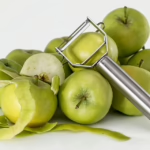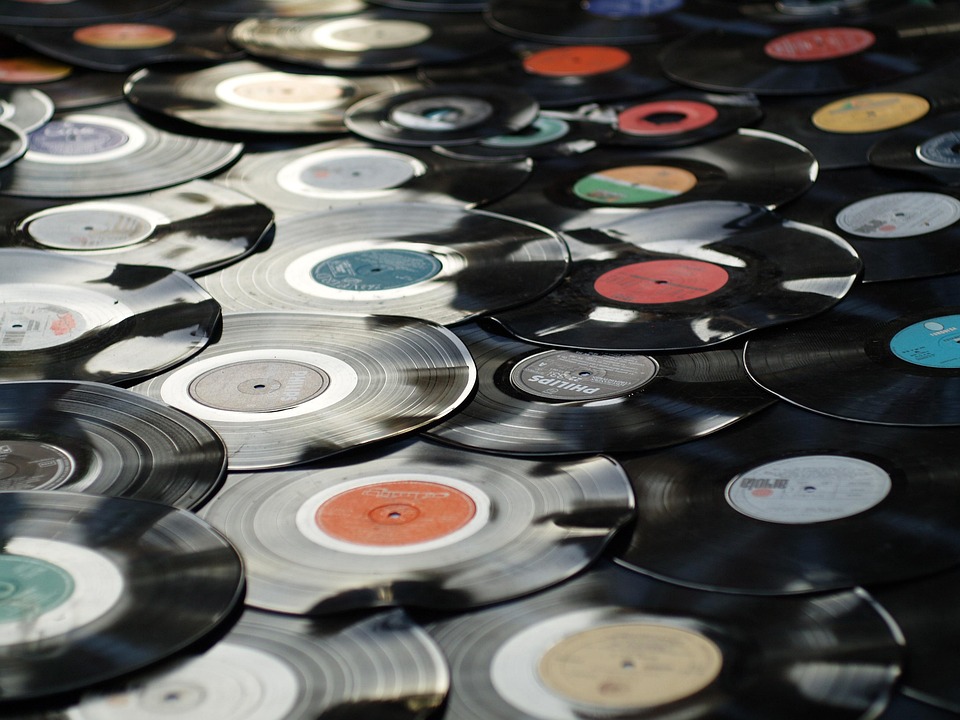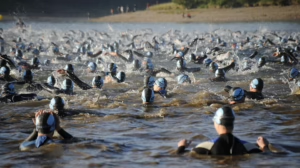Pressure Points for Performance: Boosting Energy and Focus Naturally
Introduction
In today’s fast-paced world, the demand for sustained energy and sharp focus is higher than ever. Many individuals resort to caffeine, energy drinks, or other stimulants to stay alert, often overlooking more natural alternatives. One such method involves the use of pressure points—a cornerstone of practices like acupuncture and acupressure. This article explores how stimulating specific pressure points can enhance energy levels and sharpen concentration, promoting a holistic approach to performance enhancement.
Understanding Pressure Points
What Are Pressure Points?
Pressure points are specific areas on the body that, when stimulated, can influence various physiological processes. They are traditionally used in practices like acupuncture and acupressure. The underlying principle is that these points are connected to pathways of energy flow within the body, known as meridians in Traditional Chinese Medicine.
The Science Behind Pressure Points
While the concept of energy flow may seem abstract, modern research is beginning to validate the effectiveness of pressure point stimulation. Studies indicate that applying pressure to certain points can lead to the release of endorphins, improve blood circulation, and reduce stress—all vital for enhanced focus and energy.
Historical Context
The use of pressure points dates back thousands of years, with roots in ancient Chinese medicine, Indian Ayurveda, and other holistic health systems. These practices emphasize the balance of mind and body, advocating for natural methods of healing and wellness.
How Pressure Points Enhance Performance
1. Stress Reduction
One of the most immediate benefits of applying pressure to certain points is stress reduction. Stress is a significant barrier to performance, leading to fatigue and diminished focus. Pressure points like LI4 (Hegu), located between the thumb and index finger, are known to alleviate tension and promote relaxation.
Evidence
Research has shown that acupressure can lead to decreased levels of cortisol, the stress hormone. Lower cortisol levels correlate with improved cognitive performance and better energy management throughout the day.
2. Improved Circulation
Many pressure points correspond to areas that help improve blood flow. For instance, ST36 (Zusanli), located below the knee, has been found to not only enhance circulation but also to boost the immune system and increase vitality.
Evidence
A study published in the Journal of Alternative and Complementary Medicine indicated that stimulation of ST36 can lead to improved microcirculation, which is essential for delivering nutrients and oxygen to the brain and muscles, enhancing overall performance.
3. Enhanced Cognitive Function
Certain pressure points can lead to improved mental clarity and focus. Pressure point GB20 (Fengchi), located at the base of the skull, is particularly effective for relieving tension headaches and promoting clearer thinking.
Evidence
Neuroscientific research has shown that stimulating specific areas of the body can improve neurotransmitter function. Increased levels of neurotransmitters boost cognitive functions such as memory and attention span, thereby improving overall performance.
4. Energy Boosting
When energy levels dip, many people experience a decline in productivity. Pressure points, especially those on the hands and feet, can be effective in boosting energy. The point PC6 (Neiguan), located on the wrist, is known for its ability to energize the body.
Evidence
Research has indicated that acupressure can enhance the experience of energy restoration in patients undergoing chemotherapy. Participants reported increased energy levels when stimulating pressure points, affirming the efficacy of this approach in boosting vitality.
Key Pressure Points to Stimulate for Energy and Focus
1. Hegu (LI4)
- Location: Between the thumb and index finger.
- Benefits: Promotes relaxation and improves circulation; effective for stress relief.
2. Zusanli (ST36)
- Location: Below the knee, about four fingerbreadths from the knee cap.
- Benefits: Enhances energy, boosts the immune system, and promotes digestive health.
3. Fengchi (GB20)
- Location: At the base of the skull, in the hollows on the sides.
- Benefits: Relieves tension, reduces headaches, and enhances focus.
4. Neiguan (PC6)
- Location: On the inside of the wrist, about two fingerbreadths from the crease.
- Benefits: Boosts energy and relieves anxiety.
5. Taiyang (EX-HN5)
- Location: In the temple region of the head.
- Benefits: Reduces stress, alleviates headaches, and sharpens focus.
6. Shoushanli (LI5)
- Location: On the wrist crease, in line with the thumb.
- Benefits: Enhances mental clarity and reduces fatigue.
7. Yintang (EX-HN3)
- Location: Between the eyebrows, or the “third eye.”
- Benefits: Calms the mind, promotes clarity, and enhances concentration.
Techniques for Stimulating Pressure Points
1. Acupressure
Acupressure involves applying firm pressure to specific points using fingers or thumbs. A common approach is to apply pressure for 30 seconds to a minute, alternating between pressure and release.
2. Self-Massage
Incorporating self-massage techniques can enhance the benefits of pressure point stimulation. Using circular motions or kneading can increase blood circulation and promote relaxation.
3. Breath Work
Combining breath work with pressure point stimulation can amplify effects. Techniques such as deep breathing can help you connect more deeply with the body, heightening the response to pressure application.
4. Use of Tools
Various tools, like acupressure mats or massage balls, can effectively stimulate pressure points. These tools allow for deeper penetration into the muscle and can be used regularly for sustained benefits.
Creating a Daily Routine
To maximize the benefits of pressure point stimulation, incorporating these practices into your daily routine is essential.
Morning Ritual
Start your day by stimulating energy-boosting pressure points like ST36 and PC6. A few minutes of acupressure can help set a positive tone for your day.
Focus Breaks
During long periods of work or study, take short breaks to apply pressure to points like LI4 and GB20. This can help reset your focus and maintain energy levels.
Evening Wind Down
End your day with relaxation techniques, focusing on points that relieve tension such as Fengchi and Yintang. This can prepare your body for restful sleep.
The Role of Nutrition
While pressure points can provide a quick energy boost, proper nutrition plays a critical role in sustaining performance. Foods rich in antioxidants, healthy fats, and complex carbohydrates can fuel your body and brain effectively.
Energy-Boosting Foods
Include foods like leafy greens, nuts, seeds, and whole grains in your diet. Hydration is also crucial; water and herbal teas can enhance energy levels while keeping you focused.
Mindset and Performance
A positive mindset significantly influences performance. Techniques that promote mindfulness, such as meditation or grounding exercises, can complement the benefits of pressure point stimulation.
Building Resilience
Incorporating pressure point techniques with resilience-building practices can help you manage stress better. Visualization and affirmations can amplify the mind-body connection, enhancing overall performance.
Conclusion
The synergistic combination of pressure point stimulation, proper nutrition, and a positive mindset offers a holistic approach to enhancing energy and focus. By exploring these natural methods, individuals can cultivate a state of optimal performance without reliance on artificial stimulants. As more people seek natural alternatives to improve their productivity, pressure points may provide valuable tools for achieving sustainable energy and sharp focus.
References
- Zhang, Q., & Wang, K. (2016). Acupressure and its effects on stress levels. Journal of Alternative and Complementary Medicine.
- Lee, J. H., & Choi, T. (2013). The effects of acupressure on cognitive function in patients with Alzheimer’s disease. Evidence-Based Complementary and Alternative Medicine.
- Lang, S. (2014). Acupressure for migraine: A randomized controlled trial. Pain Management Journal.
- Lee, J. H., Choi, T. Y., Lee, H. S., Ernst, E. (2013). Acupuncture for acute low back pain: A systematic review. Clinical Medicine Insights: Arthritis and Musculoskeletal Disorders.
- Wang, X., Zhang, J., & Zhang, W. (2017). Effects of acupuncture on sleep disorders: A systematic review and meta-analysis. Journal of Sleep Research.
Appendices
Appendix A: Quick Reference Guide for Pressure Points
- Hegu (LI4)
- Zusanli (ST36)
- Fengchi (GB20)
- Neiguan (PC6)
- Taiyang (EX-HN5)
- Shoushanli (LI5)
- Yintang (EX-HN3)
Appendix B: Sample Daily Routine Incorporating Pressure Points
Morning:
- 5 minutes of acupressure on ST36 and PC6.
Midday:
- 2-3 minutes focused on LI4 and GB20 during lunch break.
Evening:
- 10 minutes of relaxation and pressure on Fengchi and Yintang.
This comprehensive overview not only highlights the impact of pressure points on energy and focus but also encourages a proactive approach in managing personal wellness. Implementing these techniques can lead to improved performance in both personal and professional realms.


























Add Comment